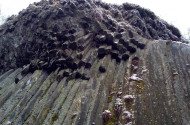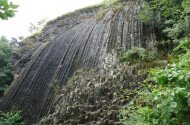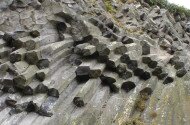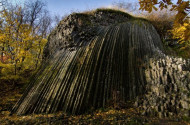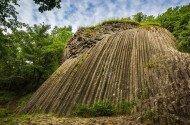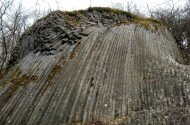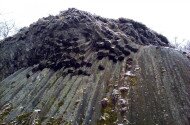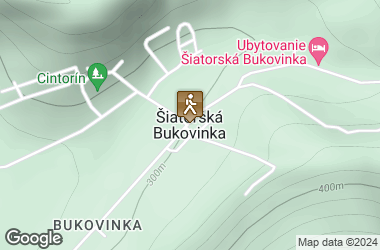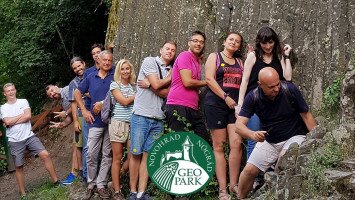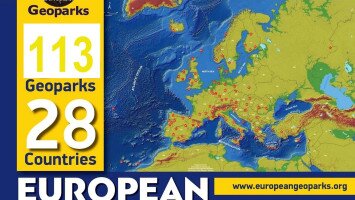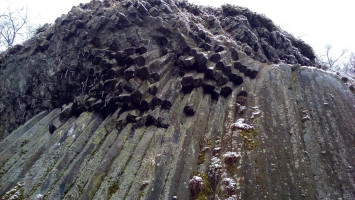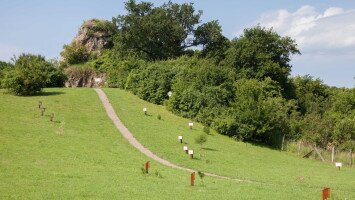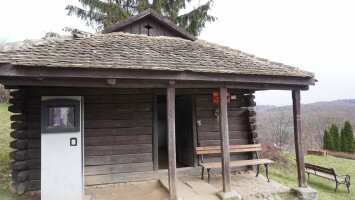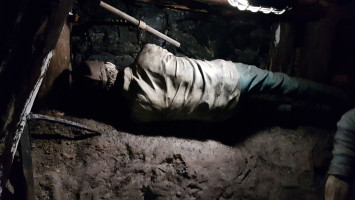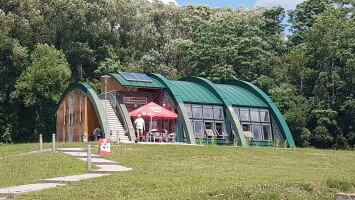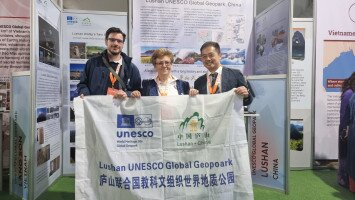
This geosite is open for the public.
Somoskő (volcanic neck): the best-known basalt excavation between Bükkrét and Somoskőújfalu, which was already known by Zipser Ch. A. (1817) and Beudant F. S. (1822). According to current knowledge, a volcanic neck that has turned into a lava flow in a maar-type crater filled with lava (Gaál 1993, Konečný et al. 2004). The shape of the neck, approx. 160 m in diameter, was asymmetrical, as the west side was almost vertical, as evidenced by the horizontal or 20 ° inclination of the columns below the castle near the border. In contrast, the columns of the known “basalt organ” (Klinda 1976) have an inclination of 60-80 ° on the eastern slope of the castle hill, reflecting a slight inclination of the inner wall of the crater. On the north-eastern slope of the castle hill, the study trail also reveals tuff and chimney breccas, which indicate the original filling of the chimney. The almost vertical contact of the basalt with the surrounding sandstone is explored by a small sand mine on the southeast slope above the study trail. The slightly sloping, 15-20 cm wide pentagonal and hexagonal unique columns of the basalt organ represent a significant scientific value that are well known abroad. The radiometric age of basalt was 4.06 ± 0.06, resp. 4.08 ± 0.03 million years (Balogh et al. 1994). Several minerals have been described from the Somoskő basalt. Such are chabazite (Zepharovich 1859, Tóth 1882, Hintze 1915), phylipsite (Kalecsinszky 1889), aragonite (Mauritz and Vendl 1942), amphibole (Leonhard 1843), olivine and augite (Mauritz 1910).
An eight-stop educational trail was built on the castle hill.Degree of protection: 5, National Nature Reserve. Somoskő Castle State Monument